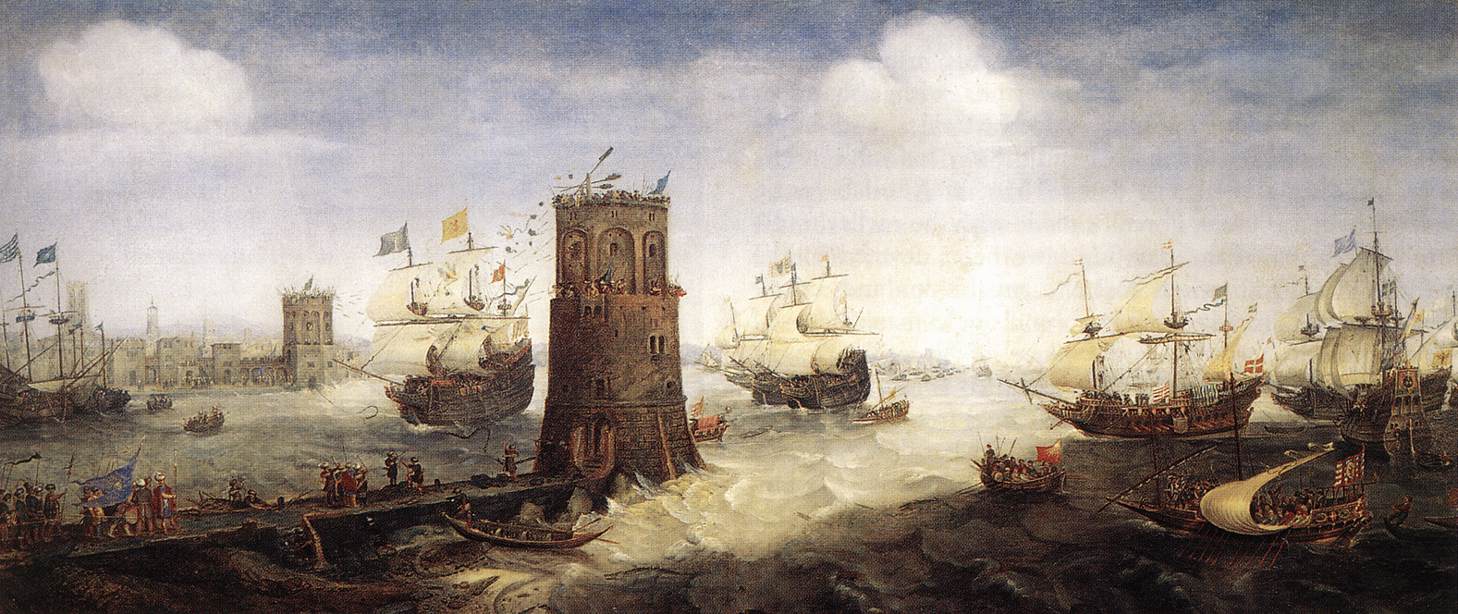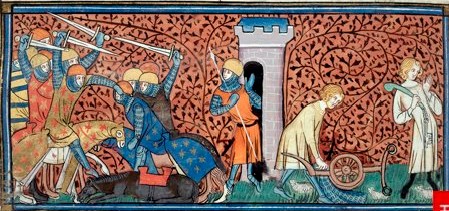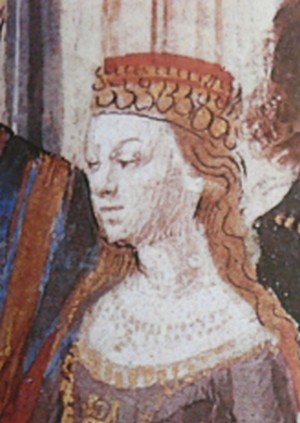|
Theobald VI, Count Of Blois
Theobald VI of Blois (French: ''Thibaut'') (died 1218) was count of Blois and Count of Clermont-en-Beauvaisis, Clermont-en-Beauvaisis from 1205 to 1218. He was son of Louis I of Blois and Catherine of Clermont. Theobald married twice: with Maud of Alençon and with Clemence of Roches, but remained childless. Clemence married Geoffrey VI, Viscount of Châteaudun, as her second husband. Theobald fought the Moors in Castile (historical region), Castile. During the campaign he contracted leprosy and returned home. After living withdrawn in his castle in La Ferté-Villeneuil for a few years, Theobald died in 1218, leaving his possessions to his aunts Margaret of Blois, Margaret and Isabelle of Chartres, Isabelle. The northern part of Blois was erected into the County of Chartres for Isabelle; Margaret received the remainder of the County of Blois, and his heirs sold Clermont to Philip II of France. References Sources * * * {{DEFAULTSORT:Blois, Theobald Vi Of 1218 ... [...More Info...] [...Related Items...] OR: [Wikipedia] [Google] [Baidu] |
County Of Chartres
Originally, the Duchy of Chartres (''duché de Chartres'') was the ''comté'' de Chartres, a County. The title of comte de Chartres thus became duc de Chartres. This duchy–peerage was given by Louis XIV of France to his nephew, Philippe II d'Orléans, at his birth in 1674. Philippe II was the younger son and heir of the king's brother, Philippe de France, Duke of Orléans. Carolingian Counts * 882-886 Hastein, Viking chieftain, beat Carloman II of France in 879, agreed to settle and received the County of Chartres. He sold it in 886 to finance an expedition during which he disappeared. Hereditary Counts House of Blois The northern portion of the County of Blois, bordering on Normandy, was sometimes alienated as the County of Chartres, but the Counts of Blois who possessed it did not use a separate title for it. In 1391, the death of the only son of Guy II, Count of Blois prompted him to sell the inheritance of the County of Blois to Louis of Valois, Duke of Orléans, ... [...More Info...] [...Related Items...] OR: [Wikipedia] [Google] [Baidu] |
Counts Of Clermont-en-Beauvaisis
The counts of Clermont-en-Beauvaisis first appeared in the early 11th century. Their principal town was Clermont, now in the Oise department but then within the ancient county of Beauvaisis in the province of Île-de-France. Following the death of the childless Theobald VI of Blois, son of Catherine of Clermont, the daughter of Raoul I, Count of Clermont-en-Beauvaisis, King Philip II of France bought the county from his heirs in 1218 and added it to the French crown. It was first granted as an appanage in 1218 to Philip Hurepel; with the extinction of his line, it was granted in 1268 to the House of Bourbon, and was confiscated with the Duchy of Bourbon in 1527. File:Clermont (60), maquette du château à la fin du XIVe siècle.jpg, Model of Clermont Castle at the end of the 14th century. File:Clermont (60), donjon, façade sud-est sur la rue du Donjon.jpg, Remains of the keep of Clermont Castle The Counts of Clermont-en-Beauvaisis should not be confused with the Counts of ... [...More Info...] [...Related Items...] OR: [Wikipedia] [Google] [Baidu] |
Counts Of Blois
During the Middle Ages, the counts of Blois were among the most powerful vassals of the King of France. This title of nobility seems to have been created in 832 by Emperor Louis the Pious for William, the youngest son of Adrian, Count of Orléans. Over a few decades, the county was gathered to the royal lands of France until the end of the 9th century, before being relegated to the status of viscount. From its autonomy around 940 to the definitive integration to the Duchy of Orleans in 1397, the county was directed by the son of the last viscount's descendants, Theobald I. His descendants, called House of Blois ended up related to a large number of European noble families. In 1397, the title was ceded by Count Guy II in the favor of Duke Louis I of Orléans, who was the second son of King Charles V. The very last hereditary count of Blois was his grandson, Duke Louis II, who annexed the county to the Crown lands of France when he was crowned King of France in 1498 under ... [...More Info...] [...Related Items...] OR: [Wikipedia] [Google] [Baidu] |
1218 Deaths
Year 1218 ( MCCXVIII) was a common year starting on Monday of the Julian calendar. Events By place Fifth Crusade * May 24 – A Crusader expeditionary force, (some 30,000 men) under King John I of Jerusalem, embarks at Acre (supported by Frisian ships), and sails for Egypt. They arrive at the harbour of Damietta, on the right bank of the Nile, on May 27. Sultan Al-Adil, surprised by the invasion, recruits an army in Syria, while his son Al-Kamil marches an Egyptian force northwards from Cairo, and encamps at Al-Adiliya, a few miles south of Damietta. * June 24 – Siege of Damietta: The Crusader army assaults the fortified city of Damietta, but they repeatedly fail. As a result, the Crusaders create a new type of naval siege weaponry, attributed by the German chronicler Oliver of Paderborn: two ships are bound together, with a siege tower and ladder constructed on top. * August 24 – After a fierce fight, the Crusaders manage to establish themselves ... [...More Info...] [...Related Items...] OR: [Wikipedia] [Google] [Baidu] |
Crown Lands Of France
The crown lands, crown estate, royal domain or (in French) ''domaine royal'' (from demesne) of France were the lands, fiefs and rights directly possessed by the kings of France. While the term eventually came to refer to a territorial unit, the royal domain originally referred to the network of "castles, villages and estates, forests, towns, religious houses and bishoprics, and the rights of justice, tolls and taxes" effectively held by the king or under his domination. In terms of territory, before the reign of Henry IV, the ''domaine royal'' did not encompass the entirety of the territory of the kingdom of France and for much of the Middle Ages significant portions of the kingdom were the direct possessions of other feudal lords. In the tenth and eleventh centuries, the first Capetians—while being the kings of France—were among the least powerful of the great feudal lords of France in terms of territory possessed. Patiently, through the use of feudal law (and, in part ... [...More Info...] [...Related Items...] OR: [Wikipedia] [Google] [Baidu] |
Count Of Chartres
Originally, the Duchy of Chartres (''duché de Chartres'') was the ''comté'' de Chartres, a County. The title of comte de Chartres thus became duc de Chartres. This duchy–peerage was given by Louis XIV of France to his nephew, Philippe II d'Orléans, at his birth in 1674. Philippe II was the younger son and heir of the king's brother, Philippe de France, Duke of Orléans. Carolingian Counts * 882-886 Hastein, Viking chieftain, beat Carloman II of France in 879, agreed to settle and received the County of Chartres. He sold it in 886 to finance an expedition during which he disappeared. Hereditary Counts House of Blois The northern portion of the County of Blois, bordering on Normandy, was sometimes alienated as the County of Chartres, but the Counts of Blois who possessed it did not use a separate title for it. In 1391, the death of the only son of Guy II, Count of Blois prompted him to sell the inheritance of the County of Blois to Louis of Valois, Duke of Orléans, me ... [...More Info...] [...Related Items...] OR: [Wikipedia] [Google] [Baidu] |
Margaret, Countess Of Blois
Margaret of Blois (French: ''Marguerite''; died 1230) was ''suo jure'' Countess of Blois in France from 1218 to 1230. From 1190 to 1200, she was the countess consort of the County of Burgundy and then regent for her daughters from 1200 until 1208. Life She was daughter of Theobald V of Blois and Alix of France. Margaret married three times. Her first marriage was to Hugh of Oisy, Lord of Montmirail. Her second husband was Otto I, Count of Burgundy, with whom she had two daughters: * Joanna I, Countess of Burgundy * Beatrice II, Countess of Burgundy Finally, she married Walter II of Avesnes, they had: * Theobald, died young * Mary, Countess of Blois Mary, Countess of Blois, also known as ''Marie of Avesnes'', (1200–1241) was countess of Blois from 1230 to 1241. She was the daughter of Walter of Avesnes and Margaret of Blois.(FR)Henri Platelle, ''Présence de l'au-delà: une vision médi� ... References Sources * * * {{DEFAULTSORT:Margaret, Countess of Blois ... [...More Info...] [...Related Items...] OR: [Wikipedia] [Google] [Baidu] |
Count Of Blois
Count (feminine: countess) is a historical title of nobility in certain European countries, varying in relative status, generally of middling rank in the hierarchy of nobility. Pine, L. G. ''Titles: How the King Became His Majesty''. New York: Barnes & Noble, 1992. p. 73. . Especially in earlier medieval periods the term often implied not only a certain status, but also that the ''count'' had specific responsibilities or offices. The etymologically related English term "county" denoted the territories associated with some countships, but not all. The title of ''count'' is typically not used in England or English-speaking countries, and the term ''earl'' is used instead. A female holder of the title is still referred to as a ''countess'', however. Origin of the term The word ''count'' came into English from the French ', itself from Latin '—in its accusative form ''comitem''. It meant "companion" or "attendant", and as a title it indicated that someone was delegated to r ... [...More Info...] [...Related Items...] OR: [Wikipedia] [Google] [Baidu] |
House Of Blois
The House of Blois () was a noble family that arose in the West Francia, Kingdom of West Francia in the early 10th century, and whose prominent members were often named Theobald (''Thibaud'', ''Thibault'', ''Thibaut'' in French language, French). History This lineage came from Theobald the Elder, viscount of Tours before 908. Theobald became viscount of Blois before 922. Afterwards the House of Blois accumulated the counties of Blois, Chartres, Châteaudun and as successors of Herbertians the counties of Troyes, Reims and Meaux - core of the County of Champagne, and finally the kingdom of Navarre. The House of Blois-Champagne, which was founded by Theobold II in 1025, split into several branches. The House of Blois-Chartres, which was founded by Theobold V of Blois inherited the counties of Blois and Chartres and others in 1152. His descendants would hold the counties until the deaths of Margaret and Isabella, to which the branch became extinct in 1249. The House of Blois-Navarre ... [...More Info...] [...Related Items...] OR: [Wikipedia] [Google] [Baidu] |
Philip II Of France
Philip II (21 August 1165 – 14 July 1223), also known as Philip Augustus (), was King of France from 1180 to 1223. His predecessors had been known as kings of the Franks (Latin: ''rex Francorum''), but from 1190 onward, Philip became the first French monarch to style himself "King of France" (''rex Francie''). The son of King Louis VII and his third wife, Adela of Champagne, he was originally nicknamed () because he was a first son and born late in his father's life. Philip was given the epithet "Augustus" by the chronicler Rigord for having extended the crown lands of France so remarkably. After decades of conflicts with the House of Plantagenet, Philip succeeded in putting an end to the Angevin Empire by defeating a coalition of his rivals at the Battle of Bouvines in 1214. This victory would have a lasting impact on western European politics: the authority of the French king became unchallenged, while John, King of England, was forced by his barons to assent to Magna C ... [...More Info...] [...Related Items...] OR: [Wikipedia] [Google] [Baidu] |
County Of Blois
The County of Blois was a feudal principality centred on Blois, south of Paris, France. It was created just after king Clovis I conquered Roman Gaul around AD 500. Between the 8th and the 13th centuries, it was amongst the most powerful vassal counties within the Kingdom of France, after having succeeded in surrounding the Capetian dynasty's lands of France since Blois annexed the Champagne. Since its creation up to 1498, the county was directed by counts, often with various more or less prestigious titles of nobility, or sometimes delegating their task to viscounts. The county existed until its definitive attachment to the Kingdom's lands in 1660, when Gaston, Duke of Orléans and last count of Blois, died. History Ancient times From the 1st to the 5th centuries, Bloisian depended on the Carnutes '' oppidum'' of ''Autrium'' (corresponding to current city of Chartres), in the Roman province of Gallia Lugdunensis Senonia. At that time, Blois was actually a little gr ... [...More Info...] [...Related Items...] OR: [Wikipedia] [Google] [Baidu] |






